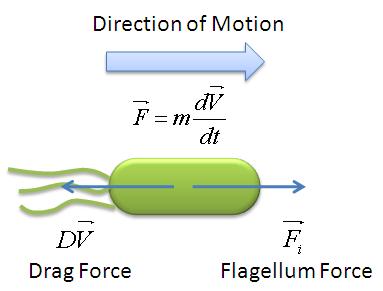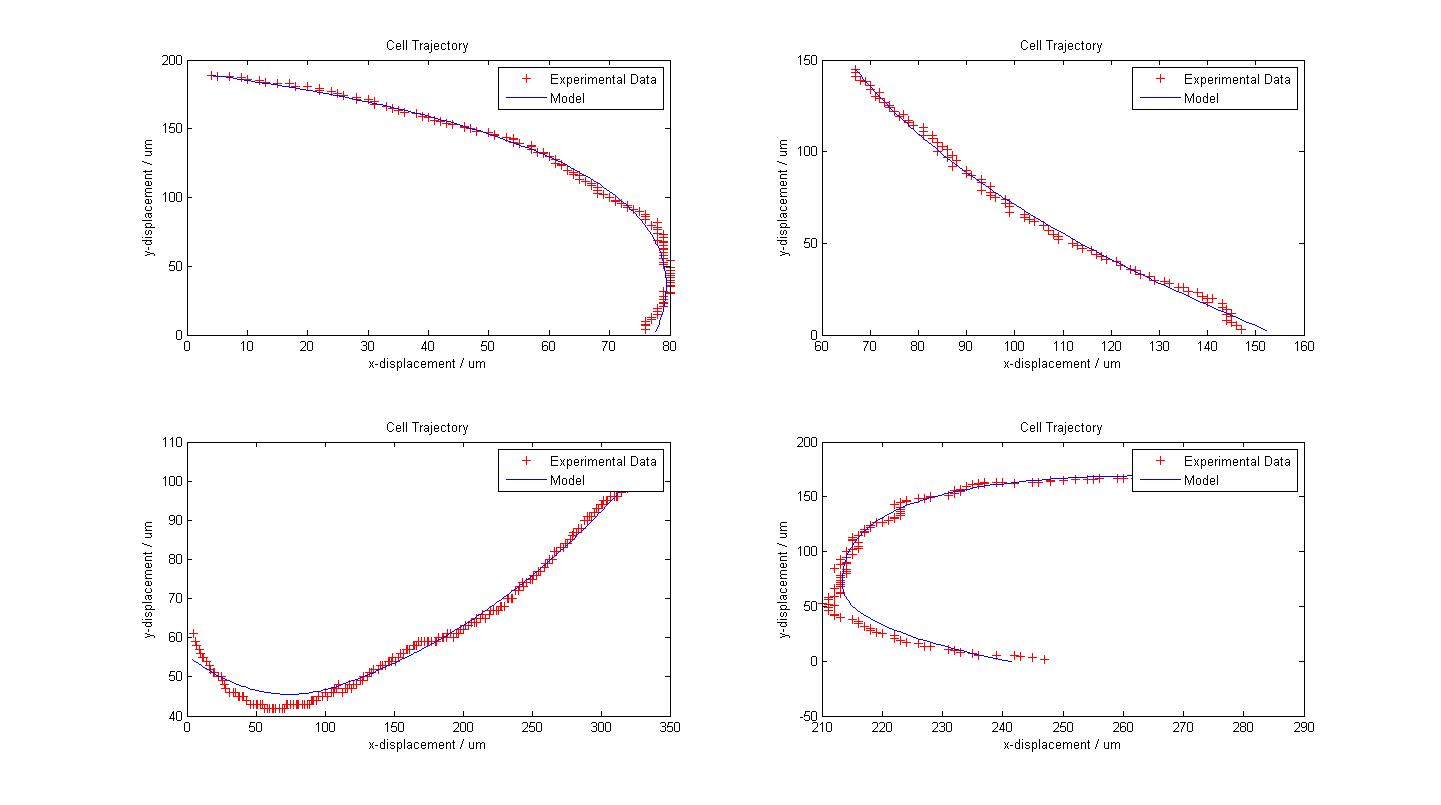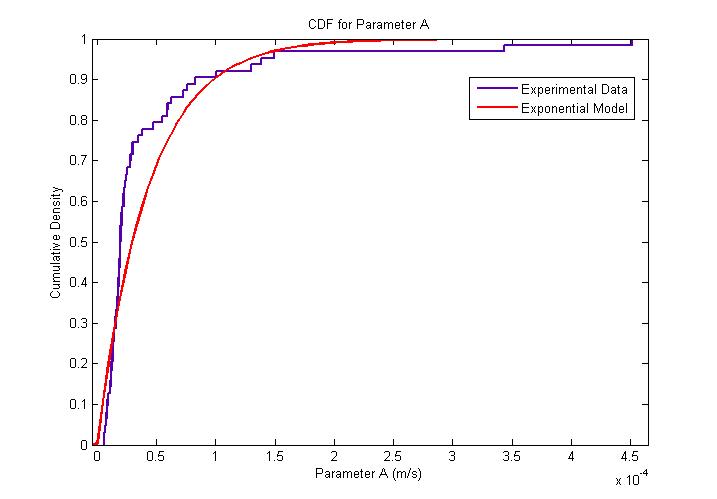Team:Imperial College/Motility Control
From 2008.igem.org
| Line 4: | Line 4: | ||
{{Imperial/Box1|Results| | {{Imperial/Box1|Results| | ||
| - | [[Image:Mechanical_Model.jpg|300px|center]]<br> | + | [[Image:Mechanical_Model.jpg|300px|center]] |
| + | <center>''Mechanical Model of Motile B.subtilis''</center><br> | ||
| + | |||
We modelled the motility of motile ''B.subtilis'' using a mechanical model as shown above. Using experimental data from cell tracking, we were able to extract parameters which describe the model. The model and its parameters are defined [[Team:Imperial_College/Motility| '''here''']]. In summary, parameter ''A'' is the ratio of flagellum force to medium viscosity. It also represents the velocity of the cell after a sufficiently long time has elapsed, given that the flagellum force remains constant throughout its run., ''B'' is the initial velocity of the cell and alpha is the ratio of the vicosity of the medium to the cell's mass. | We modelled the motility of motile ''B.subtilis'' using a mechanical model as shown above. Using experimental data from cell tracking, we were able to extract parameters which describe the model. The model and its parameters are defined [[Team:Imperial_College/Motility| '''here''']]. In summary, parameter ''A'' is the ratio of flagellum force to medium viscosity. It also represents the velocity of the cell after a sufficiently long time has elapsed, given that the flagellum force remains constant throughout its run., ''B'' is the initial velocity of the cell and alpha is the ratio of the vicosity of the medium to the cell's mass. | ||
| Line 10: | Line 12: | ||
[[Image:Fitted_Models.jpg|800px|center]] | [[Image:Fitted_Models.jpg|800px|center]] | ||
| - | <center>Fitted Models with Experimental Data from 4 Cells</center><br> | + | <center>''Fitted Models with Experimental Data from 4 Cells''</center><br> |
The MATLAB Distribution Fitting Tool was used to model the distribution of parameter A, which is directly proportional to the flagellum force, assuming that the medium is homogenous and its viscosity is constant throughout the medium. Parameter A was the found to be exponentially distributed. The following figures describe the probability density function (PDF) and cumulative distribution function (CDF). | The MATLAB Distribution Fitting Tool was used to model the distribution of parameter A, which is directly proportional to the flagellum force, assuming that the medium is homogenous and its viscosity is constant throughout the medium. Parameter A was the found to be exponentially distributed. The following figures describe the probability density function (PDF) and cumulative distribution function (CDF). | ||
[[Image:Exponential_Distribution_for_Parameter_A_PDF.jpg|center|450px]] | [[Image:Exponential_Distribution_for_Parameter_A_PDF.jpg|center|450px]] | ||
| - | <center>Probability Distribution for Parameter A</center><br> | + | <center>''Probability Distribution for Parameter A''</center><br> |
[[Image:Exponential_Distribution_for_Parameter_A_CDF.jpg|450px|center]] | [[Image:Exponential_Distribution_for_Parameter_A_CDF.jpg|450px|center]] | ||
| - | <center>Cumulative Distribution for Parameter A</center><br> |}} | + | <center>''Cumulative Distribution for Parameter A''</center><br> |}} |
{{Imperial/Box2|Conclusion| | {{Imperial/Box2|Conclusion| | ||
Revision as of 19:20, 29 October 2008
Results of Motility Analysis
|
|||||||||||
 "
"




